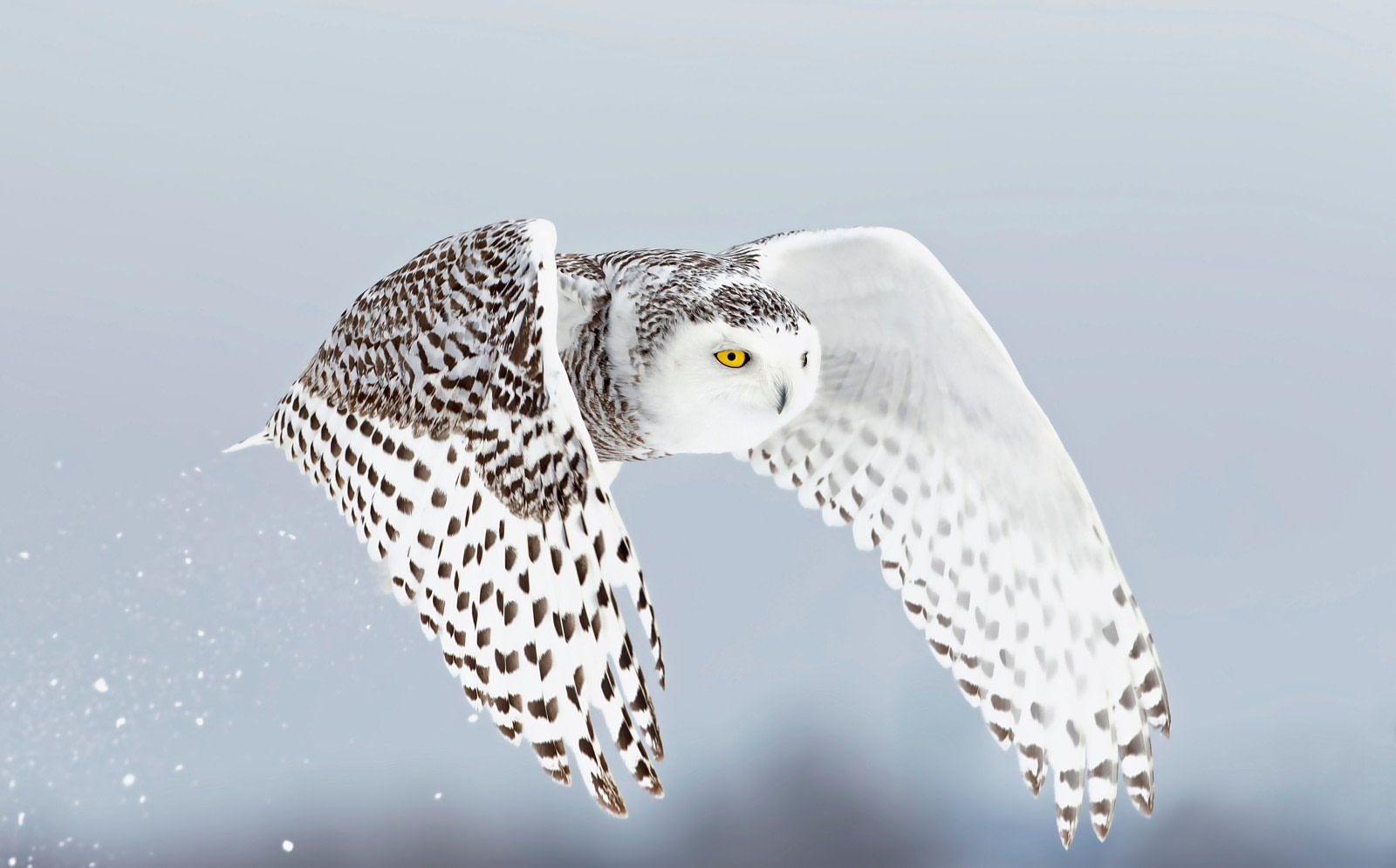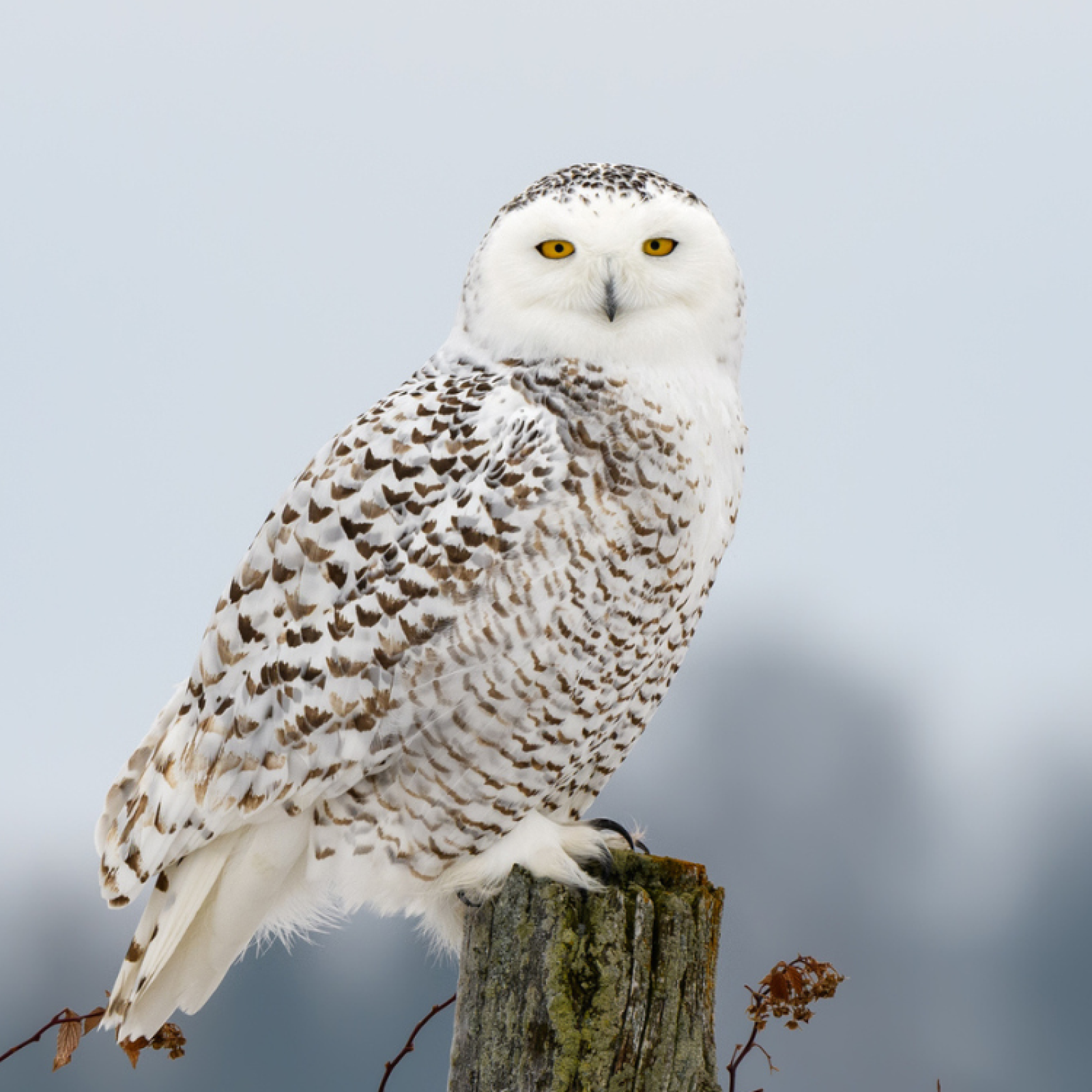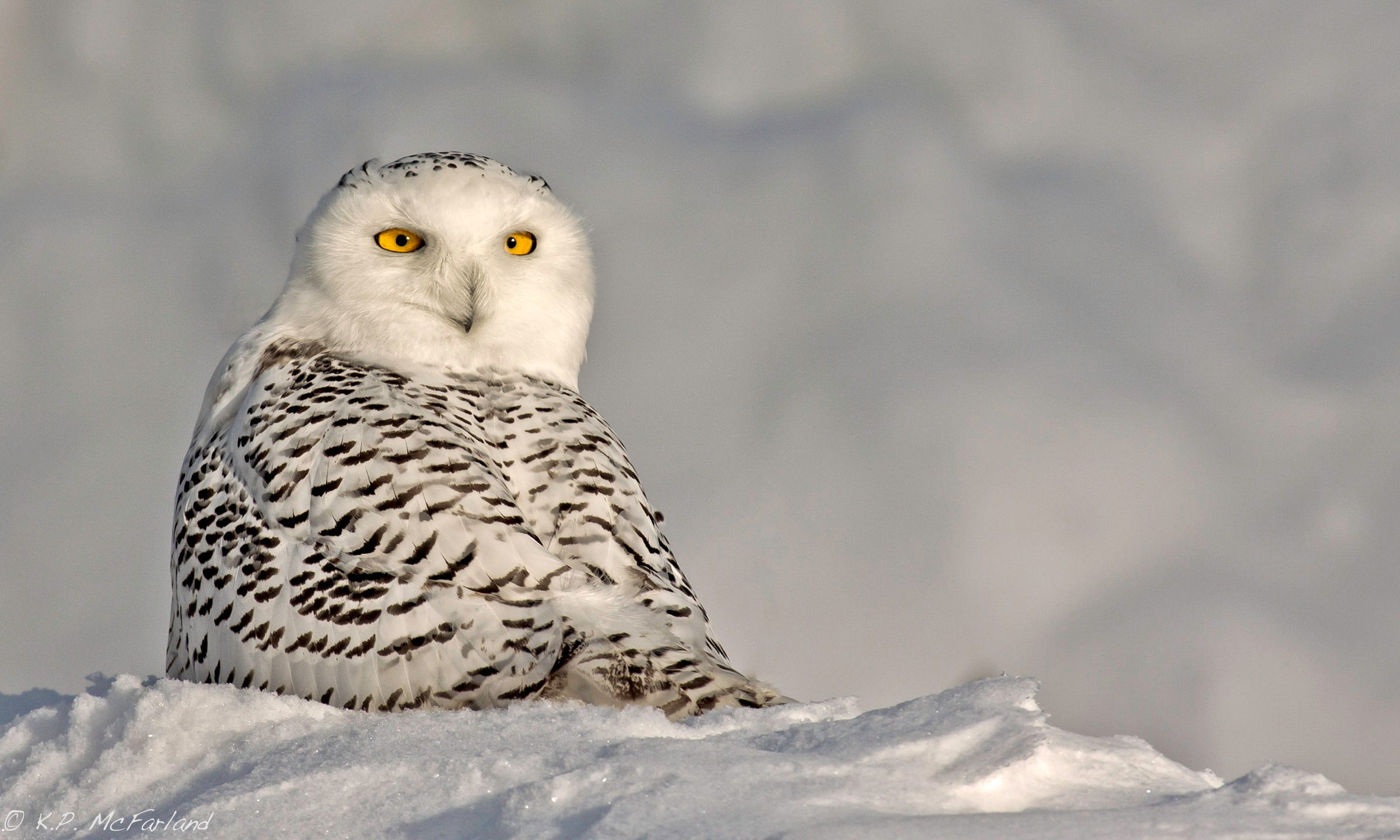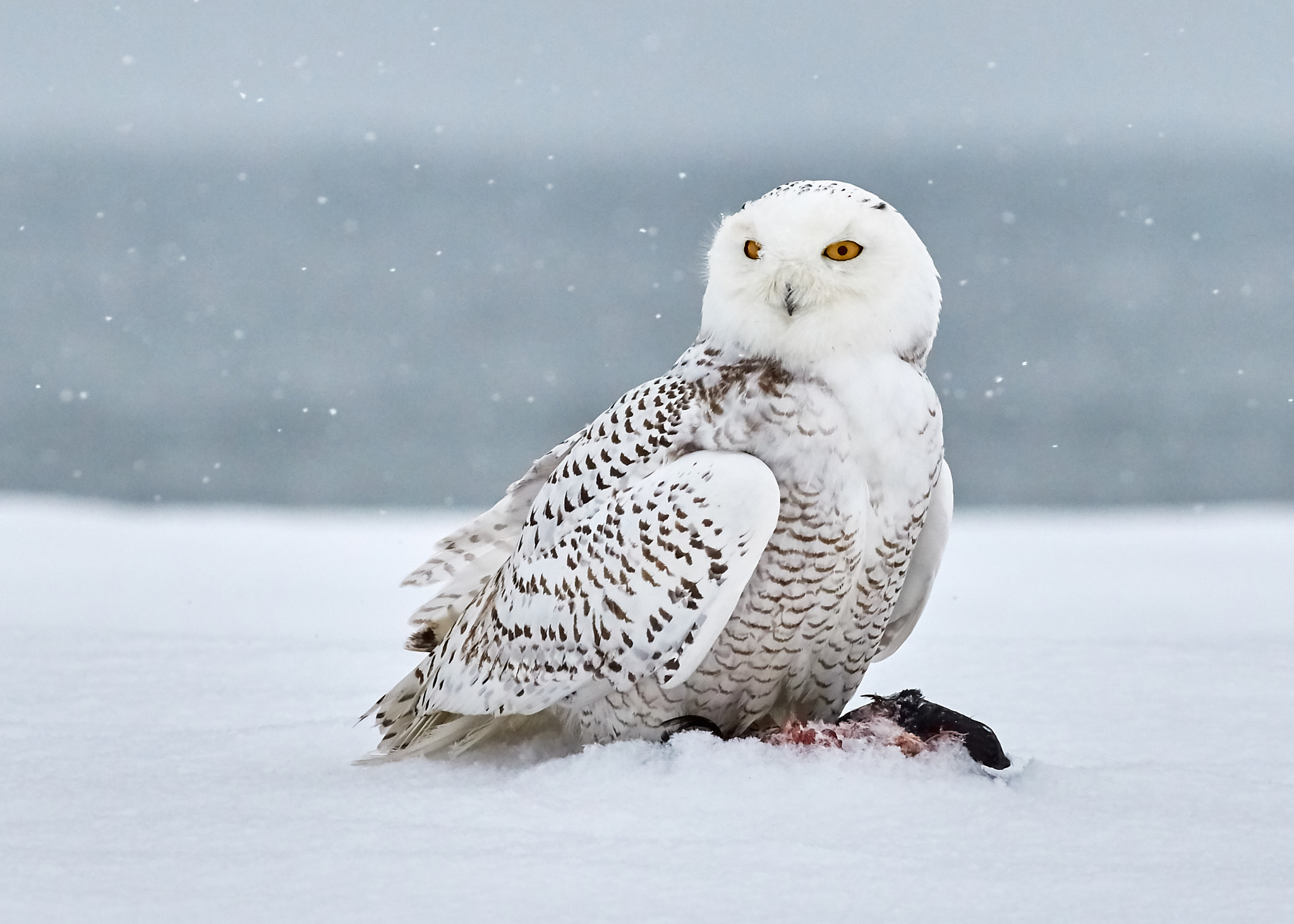Snowy Owl: The Enchanting Guardian of the Arctic Tundra

In the vast and silent expanses of the Arctic tundra, a creature of ethereal beauty and stealthy prowess emerges as the guardian of the frost-kissed landscapes—the Snowy Owl. Cloaked in pristine white feathers that mirror the purity of its surroundings, this magnificent bird becomes a symbol of the stark, yet enchanting, beauty of the frozen wilderness.

The snowy owl, with its distinctive round face and piercing yellow eyes, epitomizes the elegance and adaptability required to thrive in one of the harshest climates on Earth. Against the backdrop of snow-covered plains and icy horizons, these majestic birds soar with an otherworldly grace, their wingspans creating silhouettes against the Arctic sun.

In the realm of the snowy owl, family is a cornerstone of survival. Mated pairs establish nests on elevated vantage points, strategically positioned to oversee their frozen domains. The male and female work in tandem to defend their territory, with the female showcasing her resilience as she endures the frigid Arctic temperatures to protect the eggs and later, the hatchlings.

Parental care among snowy owls is a delicate ballet. Once the fluffy white owlets emerge, the parents engage in a coordinated effort to provide warmth, nourishment, and guidance. The snowy owl family dynamic is a testament to the intricate balance between the harsh demands of nature and the enduring commitment to the next generation.

Snowy owls are adept hunters, relying on their keen eyesight and exceptional hearing to locate prey beneath the snowy camouflage. Their primary diet consists of small mammals, such as lemmings and voles, which thrive in the Arctic tundra. The success of each hunting expedition contributes not only to the owl’s survival but also to the intricate ecological balance of the region.
The haunting call of the snowy owl echoes through the stillness of the Arctic, adding a touch of mystique to the vast, silent landscapes. These calls serve not only as communication between mates but also as a means of establishing territory and signaling the presence of potential threats or prey.


While the snowy owl is emblematic of the Arctic’s beauty, it faces challenges in a rapidly changing climate. Shifts in temperature and habitat disturbance can impact the delicate balance of the ecosystem, affecting both the owl and its prey. Conservation efforts and awareness play a crucial role in ensuring the preservation of this iconic species and the unique ecosystems it inhabits.
In the Arctic’s frozen expanse, the snowy owl stands as a testament to nature’s ability to carve out a niche in even the most inhospitable environments. Its story, painted against a canvas of snow and ice, is one of resilience, familial bonds, and the enduring magic of the Arctic wilderness. As the guardian of the tundra, the snowy owl invites us to marvel at the delicate dance between life and nature in the world’s northernmost realms.



